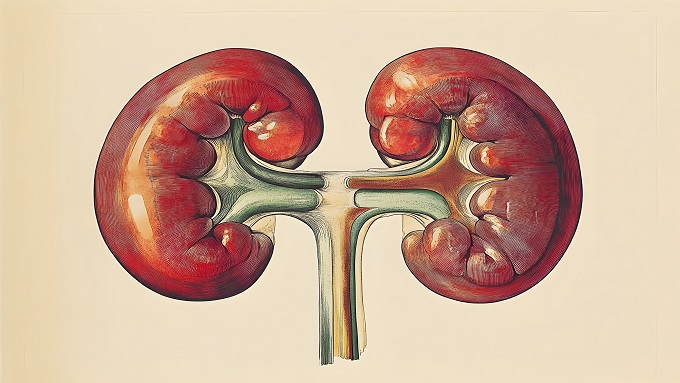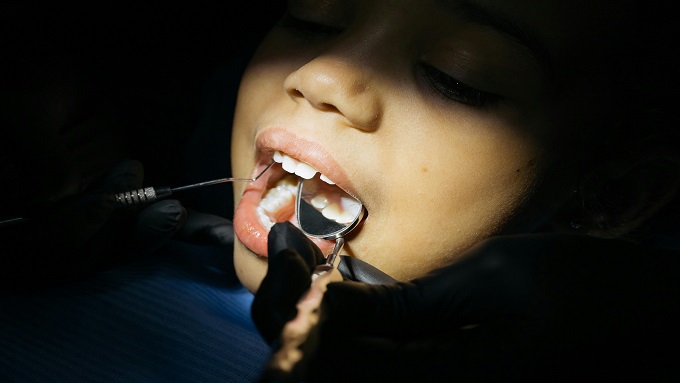PENGGUNAAN ARCH BAR PADA FRAKTUR DENTOALVEOLAR
Downloads
Background: Mandibular fracture is the most common case of craniofacial fracture. Nowadays, there are many methods available for treating mandibular fracture, and yet there has been no single method that can be applied to all fracture cases. Open reduction and rigid internal fixation is often used as a choice of treatment, but it needs surgical treatment and higher cost. Objective: To describe an alternative treatment for dentoalveolar fracture. Case: A 22-year-old man with simple mandibular dentoalveolar fracture due to traffic accident 12 days prior to patients' visit to the dental hospital. Patient also suffered from zygomatic, infraorbital and frontal fractures. Mandibular dentoalveolar fracture was treated by debridement, surgical refracturing and fixation on mandibular teeth using arch bar only. Discussion: Abnormal function that is caused by dentoalveolar and bone destruction needs to be treated by anatomy reduction based on good occlusion. The advantages of non-surgical reposition are no scarring on extra oral features and lower risk of complication. Conclusion: Repositioning and fixation using arch bar without Intermaxillary Fixation (IMF) can be used as an alternative treatment in fixing mandibular fracture.
Adeyemi, M.F. Adeyemo, W.L. Ogunlewe, M.O. Ladeide, A.L., 2012. Is healing outcome of 2 weeks intermaxillary fixation different from that of 4 to 6 weeks intermaxillary fixation in the treatment of mandibular fractures? J Oral maxillofac Surg, 70: 1896-902.
Atilgan, S. Erol, B. Yaman, F. Yilmaz, N. Ucan, M.C., 2010. Mandibular fracutres: a comparative analysis between young and adult patients in the southeast region of Turkey. J appl Oral Sci, 18(1): 17-22.
Chao, A.H. Hulsen, J., 2015. Bone-supported arch bars are associated with comparable outcomes to Erich arch bars in the treatment of mandibular fractur es with intermaxillary fixation. J Oral Maxillofac Surg, 73: 306-13.
De Matos, F.P. Arnez, M.F.M. Sverzut, C.E. Trivellato, A.E., 2010. A retrospective study of mandibular fracture in a 40-month period. Int. J. Oral Maxillofac. Surg, 39: 10-5.
Eskitascioglu, T. Ozyazgan, I. Coruh, A. Gunay, G.K. Yontar, Y. Altiparmak, M., 2013. Fractures of the mandible: a 20-year retrospective analysis of 753 patients. Ulus Travma Acil Cerrahi Derg, 19(4): 348-56.
Glazer, M. Joshua, B.Z. Woldenberg, Y. Bodner, L., 2011. Mandibular fractures in children: analysis of 61 cases and review of the literature. International Journal of Pediatric Otorhinolaryngology, 75: 62-4.
Hashemi, H.M. Parbiz, A., 2011. Complications using intermaxillary fixation screws. J Oral Maxillofac Surg, 69: 1411-4.
John, B. John, R.R. Stalin, A. Elango, I., 2010. Management of mandibular body fractures in pediatric patients: a case report with review of literature. Contemp Clin Dent, 1(4):291-6.
Nandini, G.D. Balakrishna, R. Rao, J., 2011. Self tapping screws v/s Erich arch bar for inter maxillary fixation: a comparative clinical study in the treatment of mandibular fractures. J. Maxillofac. Oral Surg., 10(2):127-31.
Nugraeni, Y. Kamadjaja, D.B. Utomo, H., 2009. Simple replantation protocol to avoid ankylosis in teeth intended for orthodontic treatment, Literature Review. Dental Journal., 42(1):25-30.
Qadri, G.W. Mokhtar, S.M., 2008. Paediatric mandibular fractures: report of a case. Dental Traumatology, 24: 67-70.
Saluja, H. Kini, Y. Mahindra, V. Karkar, B.M. Rudagi, V. Dehane., 2012. A comparative evaluation of different treatment modalities for parasymphysis fractures: a pilot study. Int. J. Oral Maxillofac. Surg, 41: 906-11.
Schindeler, A. McDonald, M.M. Bokko, P. Little, D.G., 2008. Bone remodeling during fracture repair: the cellular picture.Seminars in Cell & Development Biology, 19: 459-66.
Vriens, J.P.M. Van der Glas, H.W. Moos, K.F. Koole, R., 1998. Infraorbital nerve function following treatment of orbitozygomatic complex fractures: a multitest approach. Int. J. Oral. Maxillofac. Surg. 27: 27-32.
Zandi, M. Khayati, A. Lamei, A. Zarei, H., 2011. Maxillofacial injuries in western Iran: a prospective study. Oral Maxillofac Surg, 15: 201-9.
1. The journal allows the author(s) to hold the copyright of the article without restrictions.
2. The journal allows the author(s) to retain publishing rights without restrictions.
3. The legal formal aspect of journal publication accessibility refers to Creative Commons Attribution 4.0 International License (CC-BY).
































